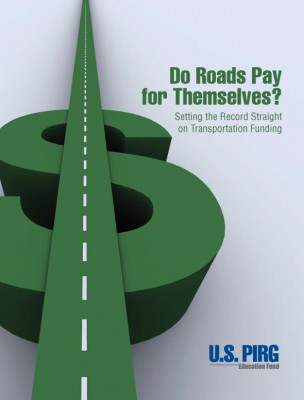
Debunking some myths about the gas tax in a new report
 A new report out today contains some fascinating facts about the federal gas tax – a subject sure to be of great contention as this new Congress tries to decide whether to raise it and how best to spend it.
A new report out today contains some fascinating facts about the federal gas tax – a subject sure to be of great contention as this new Congress tries to decide whether to raise it and how best to spend it.
Did you know, for example, that the original tax on gasoline was imposed to help reduce the federal budget deficit during the Hoover administration, and wasn’t dedicated to highways until creation of the interstate highway program in 1956 — and that that exclusive dedication only lasted until 1973? And did you know that the “interstate” highways are used far more for local travel than for long-distance travel? According to the report, two of every three miles driven are on urban segments of the system.
These are just two of the interesting findings in “Do Roads Pay for Themselves? Setting the Record Straight on Transportation Funding,” from the U.S. Public Interest Research Group. Since World War II, the authors calculate, the amount of money spent on roads has exceeded the amount raised through gasoline taxes by $600 billion, “representing a massive transfer of general government funds to highways.” Only about half the cost of road construction and maintenance is covered by gas taxes today, the report says, and this will only get worse as cars become more fuel efficient and gas tax receipts plateau.
The point, made here again as it has been by the U.S. General Accounting Office and many others elsewhere, is that every form of transportation is subsidized. Given that fact, and because no one mode of travel meets every person’s needs in every community, the authors conclude: “America should invest in transportation projects that bring the greatest net benefits to the greatest number of people, regardless of how they are paid for.”



